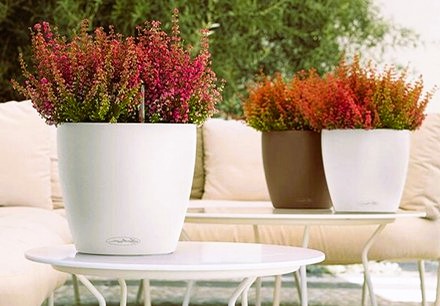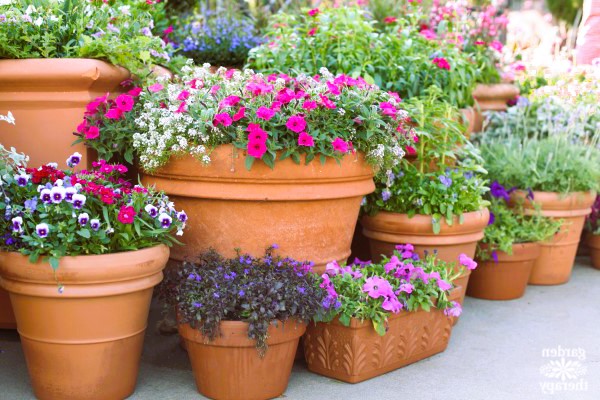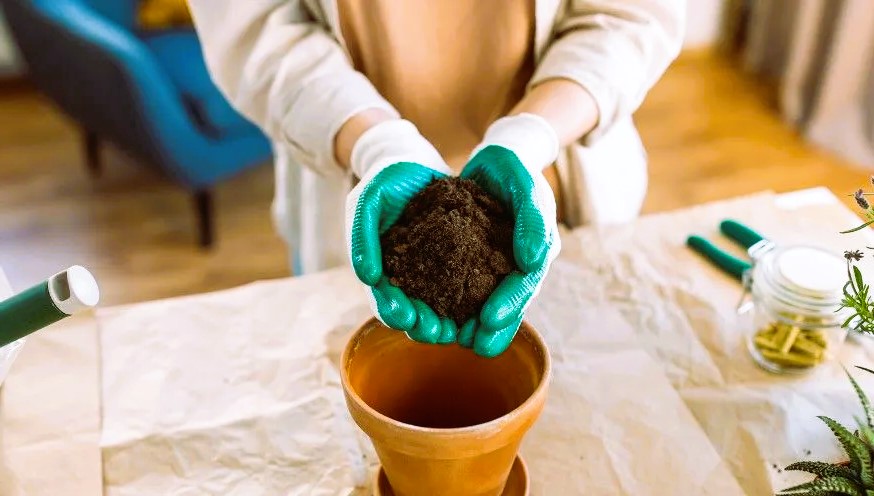Container gardening is a versatile and accessible way to bring the joy of growing plants into any living space, no matter how limited. Whether you have a small balcony, a rooftop, or a sunny windowsill, unlocking the secrets of successful container gardening can transform these spaces into thriving green havens. In this comprehensive guide, we will explore the art and science of container gardening, providing tips and insights to help you cultivate a lush and vibrant oasis within the confines of pots and containers.
1. Choosing the Right Containers:
The first step to successful container gardening is selecting the right containers for your plants. Consider the following factors:
- Material: Choose containers made of materials like terracotta, plastic, or wood. Each material has unique properties, such as moisture retention and insulation, that can impact plant health.
- Size: Ensure that the containers are appropriately sized for the plants you want to grow. Larger containers provide more room for root growth and water retention.
- Drainage: Adequate drainage is crucial to prevent waterlogged soil, which can lead to root rot. Look for containers with drainage holes, and use a well-draining potting mix.
2. Picking the Perfect Plants:

Not all plants thrive in containers, so selecting the right plants is essential. Consider the following factors when choosing plants for container gardening:
- Size: Opt for dwarf or compact varieties that are well-suited for smaller spaces.
- Sunlight Requirements: Match the sunlight requirements of the plants with the available light in your space, whether it’s full sun, partial shade, or full shade.
- Companion Planting: Some plants complement each other when grown together in containers, providing mutual benefits such as pest control or enhanced growth.
3. Soil Quality and Fertilization:
Container plants rely on the soil provided in their containers, so it’s crucial to use high-quality potting mix. Consider the following tips:
- Nutrient-Rich Soil: Choose a potting mix enriched with organic matter and essential nutrients to support healthy plant growth.
- Fertilization: Container plants often require more frequent fertilization than plants in the ground. Use a balanced, water-soluble fertilizer, and follow recommended application rates. Budget home makeover ideas, read more in the article entitled “From drab to stunning.”
4. Watering Techniques:
Proper watering is a key element in container gardening success. Overwatering or underwatering can both lead to plant stress and poor growth. Follow these guidelines:
- Consistent Moisture: Maintain consistent soil moisture levels by checking the soil regularly. Adjust your watering schedule based on factors like weather conditions and plant needs.
- Watering Techniques: Water the base of the plants rather than overhead to prevent diseases. Use a watering can or drip irrigation for precise control.
5. Container Placement:
The location of your containers can greatly impact plant health and growth. Consider the following placement tips:
- Sun Exposure: Place containers where plants receive the appropriate amount of sunlight according to their requirements.
- Air Circulation: Allow for adequate air circulation around containers to prevent fungal diseases.
6. Seasonal Considerations:
Container gardening allows for flexibility in changing plant arrangements with the seasons. Consider the following seasonal tips:
- Seasonal Rotation: Swap out plants according to the seasons to keep your containers visually appealing and well-suited to changing weather conditions.
- Winter Protection: In colder climates, provide protection for container plants during winter, such as moving them to a sheltered location or wrapping containers with insulating materials.
7. Pruning and Maintenance:
Regular maintenance, including pruning and deadheading, is essential for the health and aesthetics of container gardens. Follow these guidelines:
- Deadheading: Remove spent flowers to encourage continuous blooming.
- Pruning: Trim back overgrown or leggy plants to maintain a compact and attractive appearance.
8. Creative Container Ideas:

Container gardening allows for endless creativity in plant arrangements. Consider the following creative ideas:
- Vertical Gardens: Utilize vertical space by incorporating hanging planters or wall-mounted containers.
- Edible Container Gardens: Grow herbs, vegetables, and fruits in containers for a bountiful and convenient kitchen garden.
- Colorful Combinations: Experiment with a variety of plant colors and textures to create visually stunning container arrangements.
9. Troubleshooting Common Issues:
Even with careful care, container gardens may face challenges. Be vigilant for common issues such as pests, diseases, and nutrient deficiencies. Promptly address these problems with appropriate solutions.
10. Resources for Further Learning:
For further insights into container gardening and plant care, explore the following resources:
- Wikipedia – Container Gardening
Unlocking the secrets of successful container gardening is a rewarding journey that allows individuals to cultivate thriving green spaces in even the smallest of areas. By choosing the right containers, selecting appropriate plants, providing quality soil, and implementing proper care techniques, you can create a lush and vibrant oasis right at your doorstep. Whether you’re a seasoned gardener or a novice, container gardening offers a versatile and enjoyable way to connect with nature and enhance your living environment. Happy gardening!


